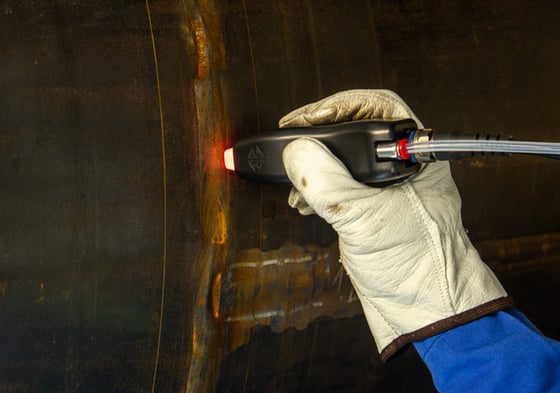The Alternating Current Field Measurement, or ACFM®, electromagnetic testing technique continues to show versatility in the range of inspection applications including extreme scenarios. This article takes a look at the applicability of ACFM for high temperature inspections such as pre- and post-inspection of hot tapped Weldolets and split tees, pressure vessels and in-service petrochemical plant steam pipework.
Conventional NDT techniques are restricted when inspecting under extreme conditions like high operating temperatures. For example, magnetic particle testing (MT) and liquid penetrant testing (PT) are usually limited to a maximum operating temperature of 60° C (140° F). There are special variants that can go up to 215° C (419° F), but they come with compromised sensitivity.
On the other hand, standard ACFM probes operate continuously at 80° C (176° F). At 150° C (302° F), they can have contact with hot components for up to 50 seconds. Moreover, they can operate at 200° C (392° F) for up to an impressive 10 seconds. Live gas lines and other pipework can operate at temperatures of 280° C (536° F), and for this reason, we’re pleased to present a special air-cooled ACFM probe to accommodate these conditions.
In a previous application note on tapping into a hot solution with ACFM for high temperature inspections, we demonstrated the ability to effectively detect surface-breaking defects at temperatures up to 300° C (572° F) in plain piping and welding with no need for couplant or fluids. This was achieved through forced air cooling and a specially designed probe to withstand the heat.
The next generation of high temperature ACFM probes offers improved crack detection and sizing in austenitic and ferritic welds. Paired with the TSC Amigo™ 2 ACFM instrument, productivity is significantly increased compared to current probes. It can detect and size cracks in all orientations in a single pass. The new high temperature ACFM probe can typically detect surface-breaking cracks 20mm (0.8in) deep through up to 4mm (0.2in) of coating, and under certain circumstances, up to 10mm (0.4in) coating; naturally results will vary depending on the environment.

With much faster data acquisition, better data quality and Signal-to-Noise Ratio (SNR), the high temperature ACFM probe is built to make inspections easier, even with temperatures rising! The redesigned offering is compact and ergonomic. The probe is connectorized, IP65 rated, and stores configurations in memory. Optimized for better heat resistance with extensive use of high-performance engineering materials, the probe has a built-in cooling system with external air supply. A valuable new feature is an alarm based on temperature thresholds, and the ceramic probe tip will light up red if internal temperatures get too high allowing technicians to prevent any damage.
With the combination of visual warnings from the probe and efficient air cooling, inspecting components operating at temperatures up to 500°C (932°F) has become significantly easier than ever before. At 500°C (932°F), scan times typically average around 12 seconds, with an approximate duty cycle of 50%.
For a deeper dive into how ACFM technology performs inspections at high temperatures (up to 500 °C), be sure to check out this detailed brochure.
Keep out of the hot seat by using the right tool designed for high temperature inspections. Contact our friendly ACFM experts to discuss your application today and stay Beyond Current.





